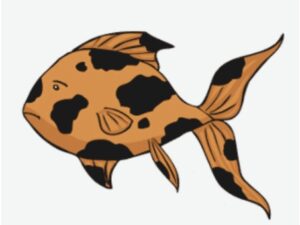The bamboo Shrimp, Atyopsis moluccensis, is a species of freshwater shrimp that originates from Southeast Asia. These shrimp are commonly found in slow-moving streams and rivers with plenty of vegetation. Bamboo Shrimp are filter feeders and get their food by sifting through the water for organic matter.
The bamboo Shrimp are a peaceful species of shrimp and can be kept with other shrimp and fish that are of a similar size. These shrimp are easy to care for and make a great addition to any freshwater aquarium. These shrimps are relatively different from other shrimps in aspects of size and other physical characteristics.
This article will show you what you need to do to successfully keep Bamboo Shrimp in your aquarium. We will tell you about their specific requirements starting from their water and tank requirements and all the other things needed to take care of them. So we request you to relax and continue reading!
Table of Contents
- Species Summary
- Bamboo Shrimp Care
- Diet in the wild and captivity
- Bamboo Shrimp Feeding Frequency
- Different Feeding Methods
- Tank Size and Shape
- Water Parameters
- Water Changes
- Cleaning the Tank
- Water Conditioners
- Lighting and Heating Requirements
- Filtration Requirements
- Substrate and Gravel
- Ammonia and Nitrates Level
- Protein Skimmer and Gravel Vacuum
- Water Test Kits
- Transportation and Handling of Bamboo Shrimp
- Bamboo Shrimp Tank Mates
- Bamboo Shrimp Life Cycle and Molting
- Social Structure
- Potential Diseases
- Preventing Disease
- Bamboo Shrimp Treatments and Medications
- Advantages Of Having Bamboo Shrimp In Your Tank
- Disadvantages Of Having Bamboo Shrimp In Your Tank
- Conclusion
Species Summary
| Scientific name: | Atyopsis moluccensis |
| Common names: | Bamboo Shrimp, Wood Shrimp, Filter Shrimp |
| Origin: | Southeast Asia |
| Adult size: | 3 inches (7.6 cm) |
| Lifespan: | 1 to 2 years |
| Family: | Atyidae |
| Genus: | Atyopsis |
| Species: | A. moluccensis |
| Care level: | Easy |
| Minimum tank size: | 20 gallons (75.7 L) for each shrimp |
| Diet: | Filter feeder |
| Swimming level: | All levels |
| Temperament: | Peaceful |
| Social structure: | Solitary |
| Breeding: | Very difficult to breed in captivity |
| Breeding type: | Sexual |
The bamboo Shrimp is a species of freshwater shrimp found in Southeast Asia but is popular almost all over the world. They are readily available in pet stores. You should know which shrimp is healthy and which one is not.
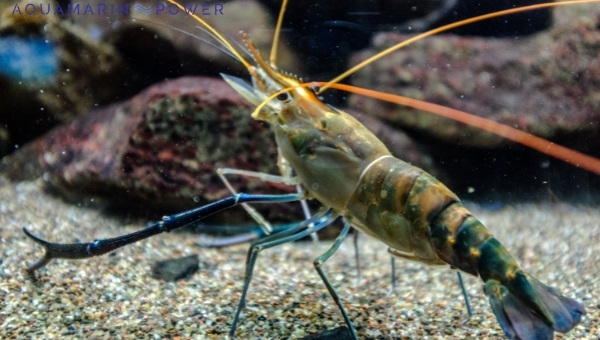
You can tell a Bamboo Shrimp is healthy by its color. A healthy shrimp will have a transparent body with either red, brown, or black spots. An unhealthy shrimp will have a cloudy body with little to no spots.
Another way of telling if a shrimp is healthy or not is by its size. A healthy shrimp will be around 3 inches (7.6 cm) long. An unhealthy shrimp will be a lot smaller than that. So make sure that you get your Bamboo Shrimp from a reputed pet store or a dealer to ensure the entire tank members’ safety.
Bamboo Shrimp Appearance
The Bamboo Shrimp is medium-sized. These shrimp have a transparent body with red, brown, or black spots. The spots are usually more prominent on the shrimp’s tail and legs. These shrimp have a brown or tan body with red and white stripes running along their sides.
The Bamboo Shrimp has two pairs of long, feather-like appendages called “filaments” to filter food from the water. These shrimp also have a pair of large claws (chelae) for defense and to capture prey.
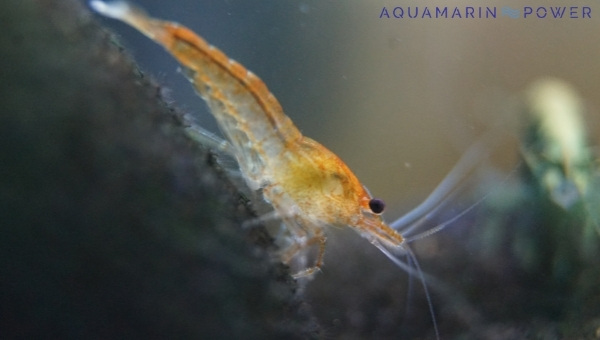
The appearance of these fish sometimes also depends on where they are coming from. The most distinct feature of these shrimps is their fan-like hands. There they are also called “Fan shrimp.” Their general appearance is what you expect from a shrimp. They have a thick body that narrows down by the end of their tails.
Origin Of Bamboo Shrimp
The Bamboo Shrimp is a freshwater shrimp that is native to Southeast Asia. They are very popular in countries like Thailand, Vietnam, and Malaysia. They are also found in the rivers and streams of China. These shrimp have been introduced to other parts of the world through the aquarium trade.
Bamboo Shrimp Habitat
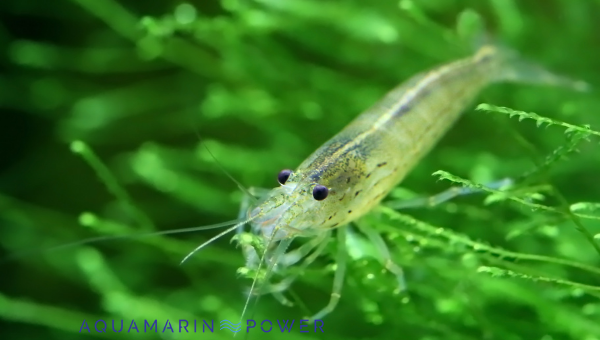
As their name suggests, these shrimp are often found near bamboo plants in slow-moving rivers and streams. You can also find Bamboo Shrimp in brackish waters near the coast. These shrimp prefer areas with lots of vegetation to hide from predators.
Bamboo Shrimp Size & Lifespan
The average adult size of a Bamboo Shrimp is around 3 inches (7.6 cm). These shrimp have a general lifespan of 1 year in captivity. You can actually help them live up to 2 years by taking proper care. Also, they can be a little smaller in size; it also depends on how you take care of them.
Bamboo Shrimp Behavior and Temperament
Bamboo Shrimp are very peaceful and calm. These shrimp do not bother other fish and just go about their business. They are not aggressive and will not fight with other fish. Bamboo Shrimp are mostly active at night, but they can be seen during the day. Their behavior towards humans is unknown, but they are not likely to be aggressive towards them.
Sexing, Reproduction, and Breeding
Bamboo Shrimp are easy to differentiate. The males have longer and thinner tails than the females. The best way to breed Bamboo Shrimp is to put a male and female together in a breeding tank. These shrimp will breed on their own without any help from the aquarist. The female will lay her eggs in the water, and the male will fertilize them.
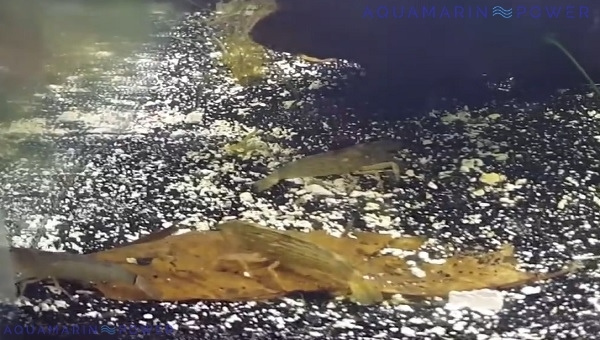
The eggs will hatch within a few days. The fry will be tiny and need to be fed baby brine shrimp or other small foods.
Although breeding them in captivity has not been so successful. It is better that you do not try to breed them if you are not an expert at this. This is because the larvae need saltwater while the adult shrimps can’t survive with this.
Bamboo Shrimp Care
Bamboo Shrimp are very easy to care for. They are hardy and can withstand a wide range of water conditions. These shrimp do not require any special care or attention. Just be sure to provide them with a clean tank, and they will be fine.
Diet in the wild and captivity
Bamboo Shrimp are filter feeders and get their food by sifting through the water for organic matter. These shrimp feed on algae, small insects, and other organic matter in the wild. These shrimp are not picky eaters and will eat just about anything.
In captivity, these shrimp can be fed various foods, including brine shrimp, blood worms, and other small frozen or live foods. It is also good to supplement their diet with algae tablets or Spirulina.
Bamboo Shrimp Feeding Frequency
These shrimp should be fed 2 to 3 times per day. It is best to provide them with small amounts of food. This will help prevent the water from becoming polluted and will also help ensure that the shrimp are getting enough food. Should avoid Overfeeding.
Different Feeding Methods
There are a few different ways that you can feed your Bamboo Shrimp. One way is to simply drop the food into the tank and let the shrimp filter it out of the water. Another way is to place the food on a piece of lettuce or other floating plant and let the shrimp eat it there. You can also use a turkey baster to squirt the food directly into the shrimp’s mouth.
Tank Size and Shape
The minimum tank size for Bamboo Shrimp is 20 gallons (75.7 L) for a single shrimp. These shrimp do best in a well-planted aquarium with plenty of hiding places. They can also be kept in a community tank as long as they are not housed with fish that are large enough to eat them. They should be kept in a more extended tank than a deeper one because they need current and space to find food.
Water Parameters
Bamboo Shrimp are very sensitive to water conditions and should only be kept in an aquarium that has been properly cycled. These shrimp prefer soft and acidic water, with a temperature of 70°-78°Fahrenheit (21°-26°Celsius). The ideal pH range for these shrimp is 6.5-8, and the ideal water hardness range is 3-10 dKH.
Water Changes
It is important to do regular water changes to keep the shrimp healthy. Water changes should be done every week, with 20% of the water being replaced. This helps keep the water stable without getting your fish in a state of shock.
Cleaning the Tank
The tank should be cleaned regularly to remove any algae or other build-up. The glass should be scrubbed regularly. These shrimp are very sensitive to chemicals, so only use safe products for shrimp when cleaning the tank. You may use a mild detergent to scrub the walls and the bottom of the tank. It would help if you were gentle while doing so.
You do not intend to put too much pressure on the walls. It would be best if you also cleaned the decorations in your tank. Ensure that there is no residue of the detergent that you used to scrub the tank. This can be harmful to your shrimp.
Water Conditioners
When setting up a new tank for Bamboo Shrimp, water conditioners are a must. These shrimp are very sensitive to chemicals and need to be acclimated slowly to new water conditions. There are many different types of water conditioners available, so be sure to choose one safe for shrimp.
Lighting and Heating Requirements
Bamboo Shrimp do not require any special lighting or heating requirements. They can be kept in a standard aquarium with a basic fluorescent light fixture. The tank should be located in a cool room, away from direct sunlight.
These shrimp do best in water between 70°-78°Fahrenheit (21°-26°Celsius). If the water gets too cold, the shrimp will become sluggish and die.
Filtration Requirements
Bamboo Shrimp do not require any special filtration requirements. A basic aquarium filter will suffice. The filter will help keep the toxins and dirt out of the water. You can have an average aquarium filter. A powerful filter is not needed for these shrimps.
Substrate and Gravel
You can use any substrate or gravel in your Bamboo Shrimp tank. However, it is essential to choose a safe substrate for shrimp. Some substrates can release harmful chemicals into the water, so do your research before choosing one.
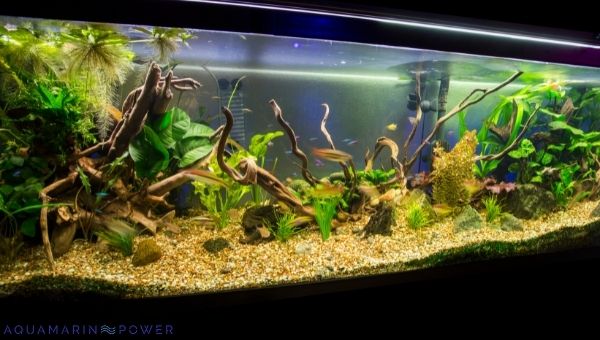
You should follow one rule to pre-wash your substrate before adding it to your tank. This will prevent the toxins from being released into the tank.
Ammonia and Nitrates Level
Ammonia and nitrates should be kept at a minimum in your Bamboo Shrimp tank. Ammonia is very toxic to shrimp and can kill them quickly. Nitrates are not as toxic as ammonia, but they can still stress shrimp and cause health problems. The best way to keep ammonia and nitrates low is to do regular water changes and keep the tank clean.
Protein Skimmer and Gravel Vacuum
Protein skimmers and gravel vacuums are not required for Bamboo Shrimp tanks. However, they can be used to help keep the water clean and free of toxins. Protein skimmers help remove organic waste from the water, while gravel vacuums help remove debris from the substrate. You should use them if you have other messy fish and create a lot of dirt in the tank.
Water Test Kits
Water test kits are a must for any aquarium, especially for Bamboo Shrimp tanks. Water test kits help you keep track of the water quality in your tank. They will also help you determine when to do a water change. There are many different types of water test kits available, so be sure to choose one that is easy to use and accurate.
Transportation and Handling of Bamboo Shrimp
Bamboo Shrimp are very delicate and should be handled with care. These shrimp can easily be injured or killed by rough handling. When transporting them, be sure to use a large container for them to move around in. Do not put too many shrimp in one container, as this can stress them out. Be sure to acclimate them slowly to their new environment.
Bamboo Shrimp Tank Mates
Bamboo Shrimp are peaceful and can be kept with other peaceful fish. These shrimp do not have any special compatibility requirements. However, it is essential to choose tank mates that are small enough not to eat them.
Some good tank mates for Bamboo Shrimp include:
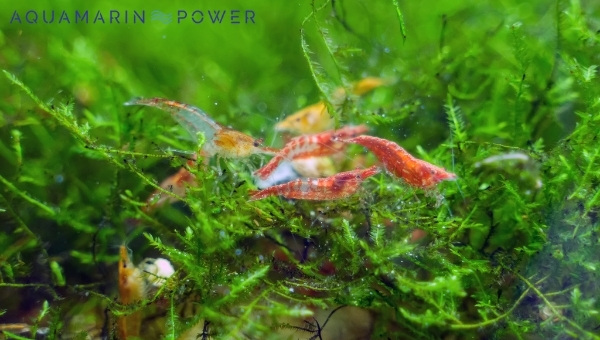
- Corydoras catfish
- Guppies
- Platies
- Mollies
- Tetras
- Cardinal tetras
- Bristlenose plecos
- Ghost shrimp
- Japanese rice fish
- Kuhli loaches
Bamboo Shrimp Life Cycle and Molting
Bamboo Shrimp have a lifespan of 1-2 years. They will go through a molting process every 45-65 days (roughly). This is where they shed their old shell and grow a new one. Molting is necessary for the shrimp to grow. However, it is very stressful for them and can be deadly if not done correctly.
During the molting process, the shrimp will stop eating and hide away. They will molt several times during their lifetime. After they molt, they will be very vulnerable and need to be left alone for a few days. Once they have regained their strength, they will start to eat again.
Social Structure
Bamboo Shrimp are not social creatures. They do not interact with other shrimp and just go about their business. These shrimp are not territorial and do not have a hierarchy. They can be kept with other shrimp, but they will not interact.
Potential Diseases
Bamboo Shrimp are very hardy and do not get sick often. However, like all animals, they can still fall prey to diseases.
Some of the diseases that Bamboo Shrimp are susceptible to include:
- Crustacean parasites: These parasites can infest the shrimp and cause them to become sick.
- Bacterial infection: Bacteria can enter the shrimp’s system through their gills or skin. This can cause problems such as fin rot or shell rot.
- Viral infections: Viruses can also infect Bamboo Shrimp. These viruses can cause deformities in the shrimp.
- Fungal infections: Fungi can grow on the shrimp’s shell and cause problems.
If your shrimp are showing any signs of illness, it is essential to take them to a vet or an experienced shrimp keeper as soon as possible. They will be able to diagnose the problem and treat it accordingly.
Preventing Disease
The best way to prevent disease is to Quarantine new shrimp. This is because new shrimp can be carriers of diseases. They can also bring parasites, bacteria, and viruses into the tank. It is important to quarantine new shrimp for at least two weeks before adding them to the main tank.
Another way to prevent disease is to keep the tank clean. This means doing regular water changes and vacuuming the gravel. It is also essential to remove any uneaten food or decaying plants from the tank.
Bamboo Shrimp Treatments and Medications
You can use medications like Copper sulfate or formalin to treat diseases in Bamboo Shrimp. It is important to remove any carbon from the filter when using these medications. This is because the carbon will remove the medication from the water.
You can also use preventative treatments like garlic or vitamin C to help keep your shrimp healthy. These treatments can be added to the water or given to the shrimp in their food.
Advantages Of Having Bamboo Shrimp In Your Tank
Bamboo Shrimp are very peaceful and do not bother other tankmates. They are also very good at cleaning up algae. These shrimp are great for beginner shrimp keepers. They are also very cheap and easy to care for. They are not high maintenance.
Disadvantages Of Having Bamboo Shrimp In Your Tank
Bamboo Shrimp are not very active and can be boring to watch. They are also not very exciting to look at. They do not interact with other shrimp and just go about their business. If you are looking for a more exciting shrimp, then Bamboo Shrimp is not for you. They have a very short life span. They might camouflage with the environment.
Conclusion
Bamboo Shrimp are great for beginner shrimp keepers. They are very cheap and easy to care for. They are low maintenance. However, they are not very active and can be boring to watch. They have some disadvantages, but that does not stop them from being a very popular species of shrimp among aquarists. They are easy to care for and make a great addition to any freshwater aquarium.
We hope you enjoyed reading this article about Bamboo Shrimp and got the essential information you needed to have before getting them in your tank. If you are planning to get them, then do your research properly, know every detail about them, and make sure that you will be able to meet their requirements and then watch them become amazing pets. Thank you soo much for reading!



